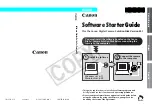
myisam_ftdump
— Display Full-Text Index information
316
innochecksum
prints checksums for
InnoDB
files. This tool reads an
InnoDB
tablespace file,
calculates the checksum for each page, compares the calculated checksum to the stored checksum,
and reports mismatches, which indicate damaged pages. It was originally developed to speed up
verifying the integrity of tablespace files after power outages but can also be used after file copies.
Because checksum mismatches will cause
InnoDB
to deliberately shut down a running server, it can
be preferable to use this tool rather than waiting for a server in production usage to encounter the
damaged pages.
innochecksum
cannot be used on tablespace files that the server already has open. For such files,
you should use
CHECK TABLE
to check tables within the tablespace.
If checksum mismatches are found, you would normally restore the tablespace from backup or start the
server and attempt to use
mysqldump
to make a backup of the tables within the tablespace.
Invoke
innochecksum
like this:
shell>
innochecksum [options] file_name
innochecksum
supports the following options. For options that refer to page numbers, the numbers
are zero-based.
•
-c
Print a count of the number of pages in the file.
•
-d
Debug mode; prints checksums for each page.
•
-e num
End at this page number.
•
-p num
Check only this page number.
•
-s num
Start at this page number.
•
-v
Verbose mode; print a progress indicator every five seconds.
4.6.2.
myisam_ftdump
— Display Full-Text Index information
myisam_ftdump
displays information about
FULLTEXT
indexes in
MyISAM
tables. It reads the
MyISAM
index file directly, so it must be run on the server host where the table is located. Before using
myisam_ftdump
, be sure to issue a
FLUSH TABLES
statement first if the server is running.
myisam_ftdump
scans and dumps the entire index, which is not particularly fast. On the other hand,
the distribution of words changes infrequently, so it need not be run often.
Invoke
myisam_ftdump
like this:
shell>
myisam_ftdump [options] tbl_name index_num
The
tbl_name
argument should be the name of a
MyISAM
table. You can also specify a table by
naming its index file (the file with the
.MYI
suffix). If you do not invoke
myisam_ftdump
in the
directory where the table files are located, the table or index file name must be preceded by the path
name to the table's database directory. Index numbers begin with 0.
Example: Suppose that the
test
database contains a table named
mytexttable
that has the
following definition:
Summary of Contents for 5.0
Page 1: ...MySQL 5 0 Reference Manual ...
Page 18: ...xviii ...
Page 60: ...40 ...
Page 396: ...376 ...
Page 578: ...558 ...
Page 636: ...616 ...
Page 844: ...824 ...
Page 1234: ...1214 ...
Page 1427: ...MySQL Proxy Scripting 1407 ...
Page 1734: ...1714 ...
Page 1752: ...1732 ...
Page 1783: ...Configuring Connector ODBC 1763 ...
Page 1793: ...Connector ODBC Examples 1773 ...
Page 1839: ...Connector Net Installation 1819 2 You must choose the type of installation to perform ...
Page 2850: ...2830 ...
Page 2854: ...2834 ...
Page 2928: ...2908 ...
Page 3000: ...2980 ...
Page 3122: ...3102 ...
Page 3126: ...3106 ...
Page 3174: ...3154 ...
Page 3232: ...3212 ...
















































